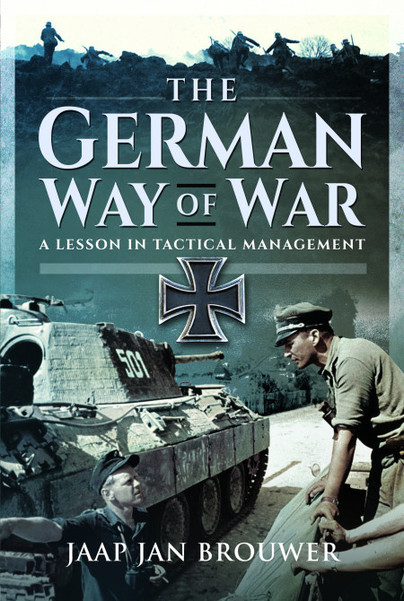Author Guest Post: Jaap Jan Brouwer
The German way of war. A lesson in tactical management
The German General Stab (General Staff): a school of thought
The German Army lost two consecutive wars and the conclusion is often drawn that it simply wasn’t able to cope with its opponents. This image is constantly reinforced in literature and in the media, where seemingly brainless operating German units led by fanatical officers predominate. Nothing was as far from the truth. The records show that the Germans consistently outfought the far more numerous Allied armies that eventually defeated them: their relative battlefield performance was at least 1.5 and in most cases 3 times as high as that of its opponents. The central question in this book is why the German Army had a so much higher relative battlefield performance than the opposition. A central element within the Prussian/German Army is Auftragstaktik, a tactical management concept that dates from the middle of the nineteenth century and is still very advanced in terms of management and organisation. In this series of blogs we will have a closer look at the key elements of Auftragstaktik and cases that will illustrate the effects of these elements in the reality of the battlefield. In this part of the series we focus on the German General Stab (General Staff).
An important organisational element of the German army was the General Stab, the General Staff. The General Stab and the Staff Officer Corps were of great importance for the professionalism of the German army. The Allies recognised the importance of the General Stab which they saw as the genius of the German army and banned the institute promptly after the First World War. The Germans took counter measures and in secret the General Stab was accommodated in the Truppenamt in 1918, and started building a new army.
Why were the Allies so apprehensive about the General Stab? The German General Stab can be seen as the knowledge and innovation centre of the German army. She played an important role in the development and monitoring of the application of the command concept and the tactical doctrine of the German army. More specifically, the General Stab was responsible:
-
for keeping the command concept, the doctrine and the methods and techniques derived from it in the form of Standard Operating Procedures for all kinds of combat situations, up to date
-
training the officer corps in the application of the command concept, the doctrine and the methods and techniques in theory and practice
-
embedding the command concept, the doctrine, the methods and techniques in the width and the depth of the command structure in such a way that officers and units actually used the whole system
-
selecting officers for key positions, who met set standards and prevented those who did, from being eligible.
This was the powerhouse of thinking where new ideas were born and the intellectual backbone of the Prussian/German army was made. Discussions were free, new ideas were welcomed, junior officers were invited to express their view on wargames.
The presence or officers of the General Stab at division level, minding the ‘going concern’ of the division, made it the commanders possible to focus on the next move and to be ‘up front’, were these officers were supposed to be.
Another – brilliant – dimension was the fact that the staff officers rotated between the front and the General Stab: in this way they could not alienate from the reality of the men up front and had the most recent information on the battlefield performance of the troops, tactical issues, quality of material and the way the enemy operated.
American Army
-
The General Staff was a real staff department, without a connection with the battlefield, actually slowing down development of new ideas
-
At the Command and General Staff School Fort Leavenworth and Westpoint students learned only standard solutions to solve tactical situations, thus creating officers that had not learned to deal with complex situations or surprise
-
The map was the main source of information, officers were not trained to lead up front
British Army
-
The British Imperial Staff could not do more than connect the contra dictionary views of the various regiments, independent ideas or doctrine were out of the question
-
Sometimes the function of a Chief of Staff was used on the division or army level, but always on the personal initiative of the commander; this was more an administrative and supporting function

The German Way of War is available here.

